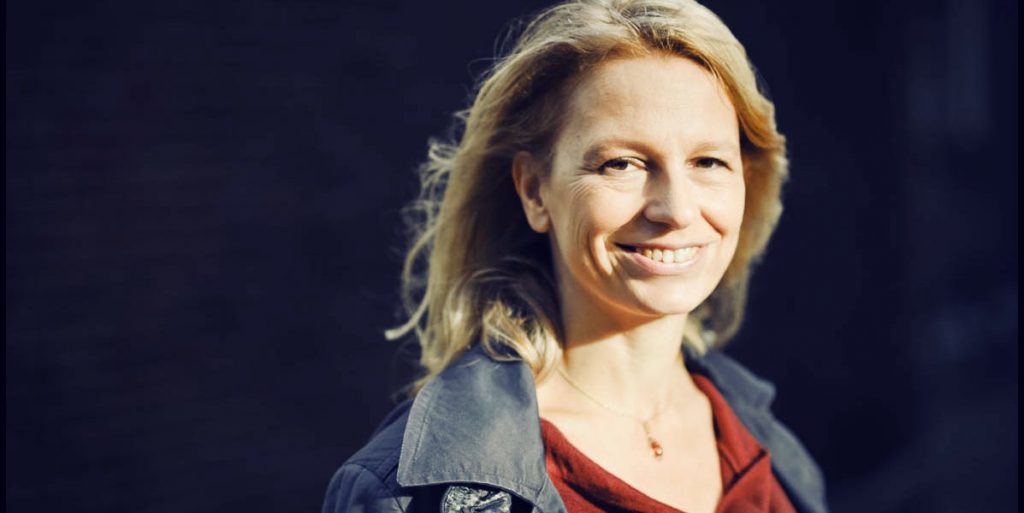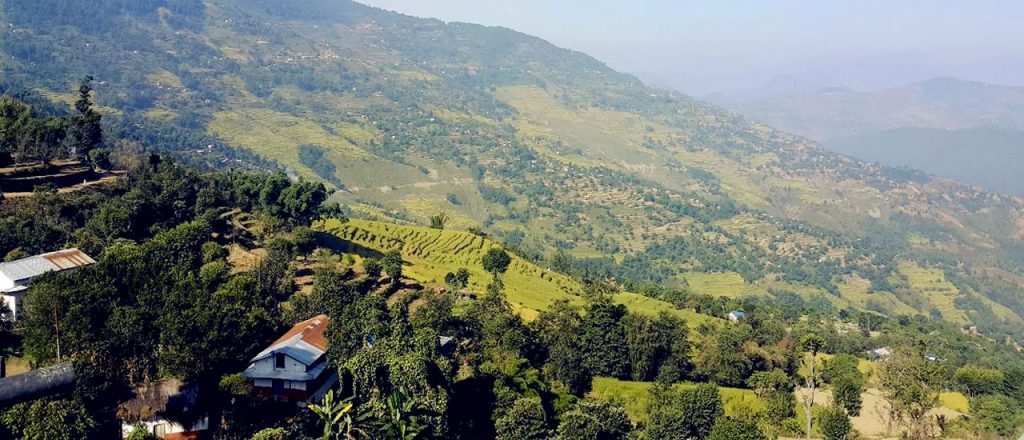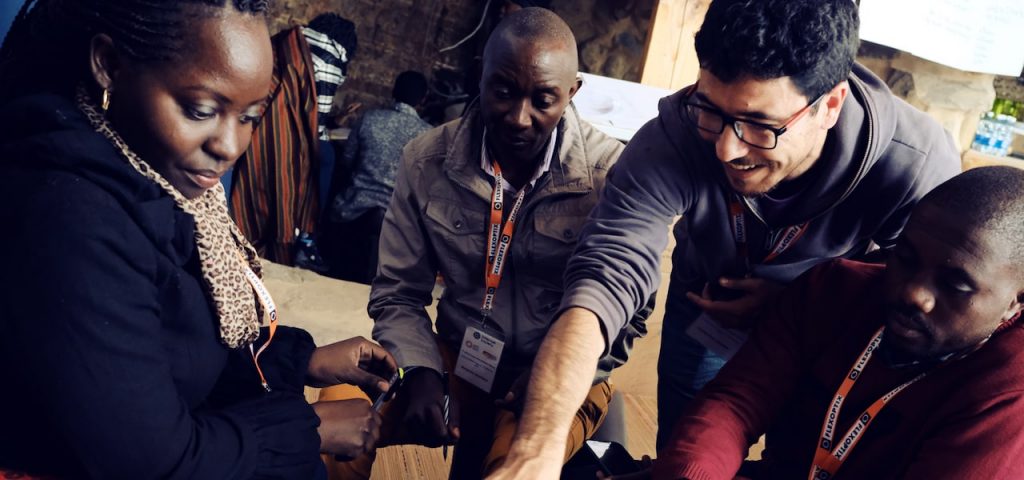Rough Guide to IETF 103: DNSSEC, DNS Security and DNS Privacy

As happened earlier this year at IETF 102 in Montreal, DNS privacy will receive a large focus in the DNSOP, DPRIVE and DNSSD working groups. Given the critical role DNS plays as part of the “public core” of the Internet in linking names and identifiers to IP addresses, the DNS must have stronger security and privacy controls. As part of our Rough Guide to IETF 103, here’s a quick view on what’s happening in the world of DNS.
Note – all times below are Indochina Time (ICT), which is UTC+7.
DNS Operations (DNSOP)
The DNS sessions at IETF 103 start on Monday afternoon from 13:50-15:50 with the DNS Operations (DNSOP) Working Group. As per usual, DNSOP has a packed agenda. The major security/privacy-related drafts include:
- DNS query minimisation – draft-ietf-dnsop-rfc7816bis – Back in 2016, RFC 7816 defined an experimental way to increase DNS privacy and limiting the exposure of DNS query information by simply not sending the entire query all the way up the DNS resolver chain. This new work is to move that RFC 7816 document from being an experiment to being an actual Internet standard.
- Running a DNS root server locally – draft-ietf-dnsop-7706bis – Continue reading
The Internet Society’s Hot Topics at IETF 103

The 103rd meeting of the IETF starts tomorrow in Bangkok which is the first time that an IETF meeting has been held in the city.
The Internet Society’s Internet Technology Team is as always highlighting the latest IPv6, DNSSEC, Securing BGP, TLS, and IoT related developments, and we’ll also be covering DNS Privacy and NTP Security from now on. This is discussed in detail in our Rough Guide to IETF 103, but we’ll also be bringing you daily previews of what’s happening each day as the week progresses.
Below are the sessions that we’ll be covering in the coming week. Note this post was written in advance so please check the official IETF 103 agenda for any updates, room changes, or final details.
Monday, 5 November 2018
- IPv6 Operations (v6ops) – Meeting 1 @ 09.00-11.00 UTC+7
- Routing Over Low power and Lossy networks (roll) – Boromphimarn 1/2 @ 09.00-11.00 UTC+7
- Crypto Forum (cfrg)- Chitlada 1 @ 11.20-12.20 UTC+7
- Domain Name System Operations (dnsop) – Chitlada 1 @ 13.50-15.50 UTC+7
- Transport Layer Security (tls) – Chitlada 2 @ 13.50-15.50 UTC+7
- IPv6 over Networks of Resource-constrained Node (6lo) – Meeting 2 @ 16.10-18.10 UTC+7
Tuesday, 6 November 2018
Internet Freedom Declines Again, with ‘Polarized Echo Chambers’ Aiding Censorship Efforts

The amount of freedom on the global Internet has declined for the eighth straight year, with a group of countries moving toward “digital authoritarianism,” according to a new report from Freedom House.
A number of factors, including the spread of false rumors and hateful propaganda online, have contributed to an Internet that “can push citizens into polarized echo chambers that pull at the social fabric of the country,” said the report, released Thursday. These rifts often give aid to antidemocratic forces, including government efforts to censor the Internet, Freedom House said.
During 2018, authoritarians used claims of fake news and of data breaches and other scandals as an excuse to move closer to a Chinese model of Internet censorship, said the report, cosponsored by the Internet Society.
“China is exporting its model of digital authoritarianism throughout the world, posing a serious threat to the future of free and open Internet,” said Sanja Kelly, director for Internet Freedom at Freedom House. “In order to counter it, democratic governments need to showcase that there is a better way to manage the Internet, and that cybersecurity and disinformation can be successfully addressed without infringing on human rights.”
Thirty-six countries sent representatives Continue reading
Future Thinking: Natali Helberger on the Impact of Consolidation on Media Diversity

Last year, the Internet Society unveiled the 2017 Global Internet Report: Paths to Our Digital Future. The interactive report identifies the drivers affecting tomorrow’s Internet and their impact on Media & Society, Digital Divides, and Personal Rights & Freedoms. We interviewed Natali Helberger to hear her perspective on the forces shaping the Internet’s future.
Natali Helberger is a professor of Information Law at the University of Amsterdam’s (UvA) Faculty of Law. She researches how the role of information users is changing under the influence of information technology, and the regulation of converging information and communications markets. Focus points of her research are the interface between technology and information law, user rights and the changing role of the user in information law and policy. Natali has conducted research for the European Commission, the European Parliament, the Council of Europe, and national governments and is a regular speaker at national and international conferences. Among others, she is member of an Expert Committee of the Council of Europe on AI and Human Rights, and one of the leaders of the Dutch VSNU Citizenship & Democracy research agenda.
The Internet Society: You recently wrote a chapter for Damian Tambini and Martin Moore’s book Digital Continue reading
IoT Tales of Horror (Inspired by Real-Life Events)

Happy Halloween! In some parts of the world, people are celebrating this holiday of horror by dressing up as monsters or other frights and watching scary movies. But sometimes these tales can be just a little boring. Pod people? Headless horsemen? Replicant children? Whatever.
I present the real horror stories of Halloween – and every other day of the year. These tales are inspired by real-life events and are guaranteed to give you a chill. (And not just because your smart thermostat is being controlled by a shapeshifting clown who lives in the sewer!)

I(o)T
In the fall of 2018, a group of kids work together to destroy an evil malware, which infects connected toys and preys on the children of their small town.
Inspired by the terrifying vulnerabilities found in everyday connected toys.
Night of the Living Devices
There’s panic across the Internet as connected devices suddenly begin attacking critical Internet infrastructure. The film follows a group of network operators as they frantically work to protect the Internet from these packet spewing, infected devices.
Inspired by the harrowing events of the 2016 Dyn attack.
 Rosemary’s Baby Monitor
Rosemary’s Baby Monitor
A young family moves into a house billed as the “smart Continue reading
The Shifting Landscape of E-Commerce

It’s no surprise that buying behaviors have seen significant change over the past several years. Global online e-commerce sales are expected to double between 2016 and 2020. According to the U.S. Bureau of Economic Analysis (BEA), personal income increased $54.8 billion (0.3%) in July of 2018, while disposable personal income (DPI) increased $52.5 billion (0.3%) and personal consumption expenditures (PCE) increased $49.3 billion (0.4%). July’s increase in personal income was a result of salary increases, rental income, and personal dividend income. The $29.6 billion increase in PCE in July led to an increase of $10.9 billion in spending for goods and a $18.9 billion increase in spending for services.
Online shoppers are experiencing a new wave of e-commerce, one that’s highly personalized to that individual’s shopping interests and behaviors. Brands are putting more dollars behind personalization, where they capture customer data points and present those customers with relevant content and products to encourage an online sale. By capturing search queries, shopping cart, geographic location, purchase history, social behavior, and customer segments, brands are able to alter their site’s content to best serve each individual customer. More than ever, e-commerce companies Continue reading
Digital Development Is the Way Forward: The Suusamyr Community Network Launches at CNX

Asylbek Sanarbekov, a social worker in the village of Suusamyr, Kyrgyzstan, can often be seen standing outside of his office building, phone in hand. He goes there to connect to the new Suusamyr Community Network, which has antennas on a nearby water tower. The Suusamyr Community Network officially launches today at the Community Network Xchange (CNX) in New Delhi. It’s a big improvement over Sanarbekov‘s connection at home, where he uses expensive and sometimes unreliable mobile data.
The village of Suusamyr is located in the Suusamyr Valley, a remote region in the Tian Shan Mountains. It’s a popular tourist destination thanks to its breathtaking landscape and its sparse population, with just over 3,000 residents. During the warmer months, they’re employed in agriculture, but by winter, thanks to heavy snowfall and subfreezing temperatures, many are unemployed.
“We are a small, landlocked mountainous country, so the traditional economic models do not necessarily work for us,” says Talant Sultanov, chair of the Internet Society‘s Kyrgyz Chapter. “We decided that digital development is the way forward.”
There’s a mobile connection in the village of Suusamyr, but according to Mairambek Ismailov, deputy head of the local self-government body, it’s not necessarily fast, reliable, or Continue reading
Rough Guide to IETF 103: IPv6
In this post for the Internet Society Rough Guide to IETF 103, I’m reviewing what’ll be happening at the IETF in Bangkok next week.
IPv6 deployment hit another milestone recently, reaching 25% adoption globally. The almost total depletion of the pool of unallocated IPv4 addresses has seen the cost of an IPv4 address on the transfer market rise from USD 15 to 18 in just a few months, which has encouraged network operators to further step-up their deployment efforts.
There was some good news from the UK with the largest mobile operator EE and the incumbent provider of broadband Internet BT, increasing to nearly 30% and 46% respectively. Other mobile operators deploying IPv6 also saw a boost this month with the release of Apple’s iOS 12 update that adds IPv6 support for cellular data.
Belgium still leads the way, but Germany is rapidly catching up, followed by Greece, the US and India. France, Malaysia, Finland and Australia also seem to have seen a surge in deployment recently.
IPv6 is always an important focus for the IETF, and this meeting will see a lot of work with respect to deployment-related improvements and the Internet-of-Things.
The IPv6 Operations (v6ops) Working Group is Continue reading
How Telemedicine Is Impacting Healthcare in Rural Nepal

Lack of an affordable and accessible community healthcare is a challenge in rural communities across the globe, and an obstacle in ensuring a healthy population in remote indigenous communities across rural Nepal. Broadband connectivity is opening the door to more accessible and cost-effective patient care by speeding up electronic health records and digital images and increasing mobility with wireless monitoring devices.
This story takes place in Dullu, a place extremely difficult to reach, located in the Dailekh District in mid-western Nepal. In order to reach the area, you need to fly from Kathmandu to Surkhet via a domestic flight and then take an off-road, four-wheel drive across approximately 80 kilometers, many of which are through a mountainous dirt road that remains challenging for both visitors and locals. Despite being fertile land filled with culture and history, Dullu is far behind in the development process and it is still struggling in terms of infrastructure development, including road access, robust communication, and proper health and education services.
The town’s solitary hospital is perpetually understaffed. Budget cuts, inhospitable winters, and lack of medical resources have perennially plagued medical service deliveries to the approximately 45,000 residents who depend on a distant health center.
The Continue reading
Rough Guide to IETF 103: Internet of Things
Not surprisingly it has been a busy 4 months in IoT, and IoT-related work in IETF has been buzzing right along. This post is intended to highlight some of these activities, and to provide a guide to relevant sessions scheduled during the upcoming IETF 103 meeting in Bangkok. Also check out the IETF Journal IoT Category, the IETF IoT page, the IETF IoT Directorate, the Internet Society’s IoT page, or the Online Trust Alliance IoT page for more details about many of these topics.
The IETF Hackathon, held on the weekend preceding the main IETF meeting (November 3-4, 2018), includes several projects directly related to IoT, with the possibility of more being added. Remote participation is available. More information is on the Hackathon wiki. Projects of interest (at the time of this writing) include those relating to:
- LPWAN CoAP/UDP/IPv6 SCHC compression and fragmentation
- ST-COAPS (ACE WG) + ANIMA BRSK
- WISHI (Work on IoT Semantic / Hypermedia Interoperability
- Trusted Execution Environment Provisioning (TEEP)
The Thing-to-Thing Research Group (T2TRG), under the Internet Research Task Force (IRTF), investigates open research issues towards turning the promise of IoT into reality. The research group will be meeting on Tuesday afternoon Continue reading
Nominations Now Open for 2019 Internet Society Board of Trustees Election

The Internet Society Nominations Committee is now inviting nominations for candidates to serve on the Internet Society Board of Trustees.
In 2019, Internet Society Chapters and the IETF will each select one Trustee, and our Organization Members will select two Trustees. Following an orientation program, all new Trustees will begin 3-year terms commencing with the Internet Society Annual General Meeting in July.
The Board of Trustees provides strategic direction, inspiration, and oversight to advance the Internet Society’s mission of preserving the open, globally-connected, trustworthy and secure Internet for everyone.
If you or someone you know is interested in serving on the Board, please see the official Call for Nominations, additional information, and links to online nomination forms at:
http://www.internetsociety.org/trustees
The nominations period closes at 15:00 UTC on Friday, 14 December 2018.
The post Nominations Now Open for 2019 Internet Society Board of Trustees Election appeared first on Internet Society.
Plenipot 2018 – What’s Up for the Internet?

Two weeks ago, the Editorial Board of the New York Times published a piece predicting that the Internet is heading for a breakup.
Based on the comments made by Alphabet Chairman Eric Schmidt during a private event the Times set out to paint a picture of a world with three Internets.
The timing is understandable. We’re in a world where things like the European Union’s General Data Protection Regulation is met with an equal measure of acceptance, annoyance, and confusion around the world.
And, just last week, my colleague Konstantinos Komaitis warned about what could happen as decision-makers are imposing rules that spill over onto the Internet, hamper innovation, deter investment in their own countries, and risk creating new digital divides.
These events set the stage for the Plenipotentiary meeting of the International Telecommunications Union (ITU).
And, in today’s climate, there are many who believe the Internet could be failing us.
So, we need to speak loudly about the fact that the Internet is not failing.
So far, I think the Internet has been a force for good.
The Internet allows us to do things like expand our access to education, build businesses, and grow our economy.
The Internet Continue reading
The Week in Internet News: Rural Maine Looks to Community Broadband

Broadband for themselves: Rural Maine residents are looking into ways to create their own community broadband networks because of a lack of service in some areas, the Press Herald reports. About 15 percent of the state’s residents don’t have access to 25 Mbps broadband service. A project in the St. Croix Valley would create Maine’s first publicly-owned broadband network.
Home patches: Amazon has issued 13 security patches, with some addressing vulnerabilities in its Internet of Things home devices, Engadget reports. If left unpatched, the security holes would let intruders crash devices and remotely run code, giving them full control.
Confusion and delay: Meanwhile, a lot of companies that are potential IoT users are delaying their deployments because of security concerns, reports Betanews. About half of companies labeled as early adopters have delayed an IoT purchase because of security issues, according to a survey from F-Secure.
The cost of a breach: Yahoo has agreed to pay a $50 million settlement to the 200 million people affected the company’s huge 2013 data breach, Fortune says. The company will also pay a tidy $35 million in lawyers’ fees. The settlement applies only to a fraction of the people affected by the email breach.
Rough Guide to IETF 103

Starting next weekend, the Internet Engineering Task Force will be in Bangkok for IETF 103, where around 1,000 engineers will discuss open Internet standards and protocols. The week begins on Saturday, 3 November, with a Hackathon and Code Sprint. The IETF meeting itself begins on Sunday and goes through Friday. We’ll be providing our rough guides on topics of mutual interest to both the IETF and the Internet Society as follows:
- Overview of ISOC @ IETF (this post)
- Internet Infrastructure Resilience
- Internet of Things
- IPv6
- DNSSEC, DNS Security and Privacy
- Identity, Privacy, and Encryption
For more general information about IETF 103 see:
Here are some of the activities that the Internet Society is involved in during the week.
Applied Networking Research Prize (ANRP)
Through the Applied Networking Research Prize (ANRP), supported by the Internet Society, the Internet Research Task Force (IRTF) recognizes the best new ideas in networking and brings them to the IETF, especially in cases where the ideas are relevant for transitioning into shipping Internet products and related standardization efforts. Out of 55 submissions in 2018, six submissions will be awarded prizes. Two winners will present their Continue reading
The 2018 Africa Summit on Women and Girls in Technology: My Story

October 9-11, 2018 will remain etched in the memories of the more than 250 girls and women in technology who converged in Accra, Ghana to participate in the second Africa Summit on Girls and Women in Technology. I was privileged to participate in this summit as well – together with seven other women in technology from my community in Ghana.
Highlights
The delegates were invited to provide their input into discussions on ongoing key policy processes in the continent and across the globe on broadband Internet access, sustainable development, and women’s empowerment.
The Deputy Minister of Communication from Ghana, Vincent Sowah Odotei, made the opening address, where he detailed Ghana’s achievements and plans to digitize Ghana and to support women to participate as users and producers of technology.
The program was planned such that the morning to lunchtime sessions were interactive keynote panels and “fireside chats,” touching on the following themes: Leadership in Technology Policy; Policy Engagement: The What, Why, and How; Women Advancing Science, Technology, Engineering, Arts, Mathematics and Design (STEAMD); Institutional Support for Women in Tech; and other topics.
The workshops were: Community Networks, Wikipedia Edit-a-thon, Enhancing Digital Security and Advocacy, and Mobilizing for Impact Continue reading
United in Build. Come See Us at Mozfest and Start to Connect the World.

Builders, creators, inventors, and tinkerers – we can start to connect half the world. Meet us at Mozfest.
Around 3.5 billion people do not have Internet access, many of them living in remote locations. How can they share the benefits of this amazing resource?
Tackling the digital divide is not easy, but everyone can help. Community networks are a great way to get involved.
What Are Community Networks?
Community networks are a global movement. From Asia with the Wireless for Communities project to the Tusheti region of Georgia and Rhizomatica’s initiative in Oaxaca, Mexico, community networks are examples of how to build, empower, and sustain communities of people. By communities, for communities, with communities.
Sound awesome? Find us at Mozfest
If you love the Internet, you’ll love Mozfest. This year you’ll be able to learn about community networks. First, visit us at the Science Fair. We’ll be featuring an interactive exhibit of photos and videos of community network projects from around the world.
From Zimbabwe to Georgia find out what it took to build each community network and why they are so unique.
There will also be a workshop where you can learn how to build your Continue reading
Routing, and Water, Are All about Trust: Introducing “Routing Security for Policymakers”

Introducing the new Internet Society white paper, “Routing Security for Policymakers“
The global routing system is a lot like a water system in a city. It’s vitally important to the Internet and we tend to overlook it until something goes wrong.
Routing determines how packets (data sent over a network or networks) containing information, like email messages, website data, and voice-over-IP (VoIP) calls, move from one place to another on the Internet. However, despite its importance, many people only think about the Internet routing when they hear about a major routing incident in the news or can’t reach their favorite websites.
Both the water system and the routing system are, at their core, built on trust.
A water system relies on hundreds of workers, its water suppliers, local farmers and companies, and countless others to deliver its service. The system is based on chains of trust, with each person or entity relying on the other to act appropriately.
Similarly, the global routing system is a complex, decentralized system made up of tens of thousands of individual networks. Independent business decisions and trusted relationships between individual network operators that are implementing the Border Gateway Protocol (BGP) determine how Continue reading
New Internet Draft: Considerations on Internet Consolidation and the Internet Architecture

Are there assumptions about the Internet architecture that no longer hold in a world where larger, more centralized entities provide big parts of the Internet service? If the world changes, the Internet and its technology/architecture may have to match those changes. It appears that level[ing] the playing field for new entrants or small players brings potential benefits. Are there technical solutions that are missing today?
These questions were one of many asked in a new Internet Draft published yesterday by former IETF Chair Jari Arkko on behalf of several Internet Architecture Board (IAB) members with the title “Considerations on Internet Consolidation and the Internet Architecture”:
https://tools.ietf.org/html/draft-arkko-iab-internet-consolidation-00
The draft text is based on the IAB “Consolidation” blog post back in March 2018as well as a new post Jari and Brian Trammell have written for the APNIC and RIPE sites.
The abstract of the Internet Draft is:
Many of us have held a vision of the Internet as the ultimate distributed platform that allows communication, the provision of services, and competition from any corner of the world. But as the Internet has matured, it seems to also feed the creation of large, centralised entities in many areas. This Continue reading
Watch Live – DNSSEC Workshop on October 24 at ICANN 63 in Barcelona

What can we learn from recent success of the Root KSK Rollover? What is the status of DNSSEC deployment in parts of Europe – and what lessons have been learned? How can we increase the automation of the DNSSEC “chain of trust”? And what new things are people doing with DANE?
All these topics and more will be discussed at the DNSSEC Workshop at the ICANN 63 meeting in Barcelona, Spain, on Wednesday, October 24, 2018. The session will begin at 9:00 and conclude at 15:00 CEST (UTC+2).
The agenda includes:
- DNSSEC Workshop Introduction, Program, Deployment Around the World – Counts, Counts, Counts
- Panel: DNSSEC Activities
- Includes presenters from these TLDs: .DK, .DE, .CH, .UK, .SE, .IT, .ES, .CZ
- Report on the Execution of the .BR Algorithm Rollover
- Panel: Automating Update of DS records
- Panel: Post KSK Roll? Plan for the Next KSK Roll?
- DANE usage and use cases
- DNSSEC – How Can I Help?
It should be an outstanding session! For those onsite, the workshop will be room 113.
- WATCH LIVE: https://participate.icann.org/bcn63-113
- More info and slides are available from these URLs (ICANN’s online schedule system breaks it up into sections based on breaks and lunch):
Oracle Cloud Infrastructure Is Proud to Join the Internet Society

The Internet has become the world’s most powerful tool for commerce, communication, and innovation because of a commitment from its stakeholders to work collaboratively to make it highly performant and more secure.
At Oracle Cloud Infrastructure, we take that commitment to a better Internet seriously and want to align ourselves with other organizations that share a similar vision. That is why I am so proud to announce our partnership with the Internet Society, a global non-profit organization dedicated to the open development, evolution and use of the Internet.
I have spoken previously about how highly I regard the Internet Society’s new CEO, Andrew Sullivan, but my admiration for the work being done extends throughout the organization. This is why it is important to me that our relationship with the Internet Society is more than ceremonial. We want to roll up our sleeves and get to work because there is much work to be done.
One area we feel we can help is in security. The Internet is a trust-based network of networks and it’s consistently under attack by bad actors. We believe there is simply greater strength in the collaboration of the good guys and gals. Security is a Continue reading